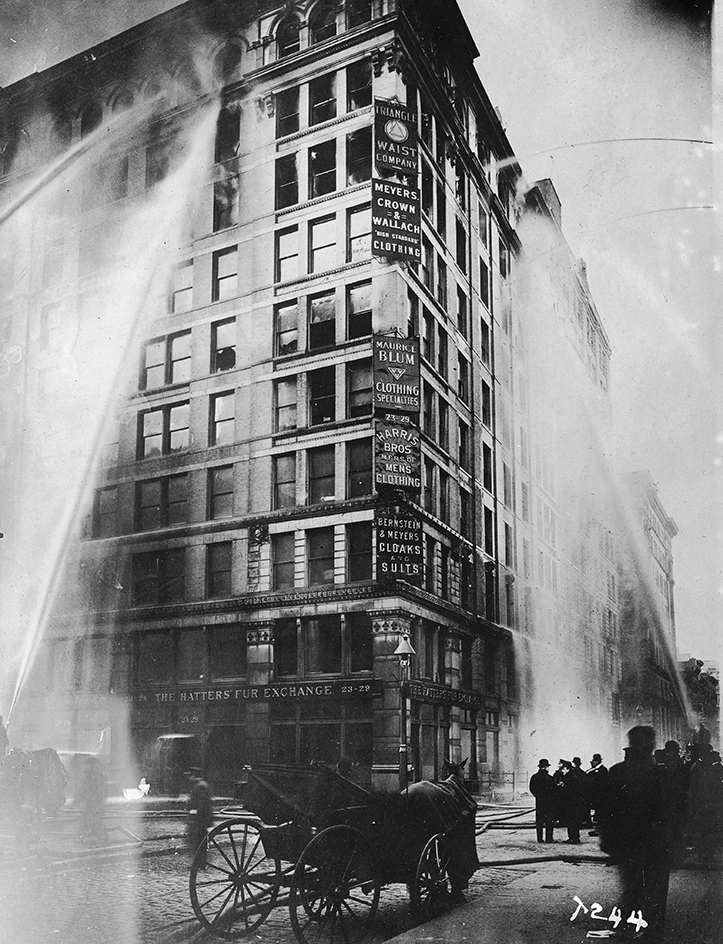Triangle Shirtwaist Factory Fire was one of the worst workplace disasters in United States history. It took place on March 25, 1911, at the Triangle Shirtwaist Company factory in New York City. The fire killed 146 workers, most of them young women or teenage girls. Most of the victims had been trapped by locked exit doors, and many jumped from windows to their deaths. The disaster brought about widespread outrage over factory conditions and led to the enactment of a number of laws that protected workers.

The Triangle Shirtwaist Company produced tailored women’s blouses. It occupied the top three floors of the 10-story Asch Building in the Greenwich Village section of New York City. The company employed more than 500 people, most of them European Jewish or Italian immigrants. Historians have described the business as a sweatshop—that is, a factory where people worked for long hours under poor working conditions for low wages. Even so, the company was considered one of the most “modern” in the garment industry at the time.
The fire began on the building’s 8th floor at about 4:40 p.m. Investigators never fully determined the cause of the fire, but they believed it was probably started by an improperly extinguished cigarette or match, or by sparks from a machine. The fire spread rapidly through the factory and burned several tons of fabric. Workers on the 8th floor escaped by stairs or by freight elevator. Most of those on the 10th floor, including managers and owners, escaped to an adjacent building from the roof. However, many workers on the 9th floor could not escape. By the time the employees realized there was a fire, the elevator shafts and stairways had become dangerously filled with smoke and flames. Also, one of the exit doors on the 9th floor had been bolted from the outside, and workers could not unlock it or force it open. The locking of exit doors was illegal, but the company locked the door to prevent workers from stealing. Numerous workers who rushed to the locked door were crushed by panicked co-workers pushing behind them.
Firefighters arrived quickly, but their ladders could not reach the building’s upper levels. The building had only one fire escape, which collapsed, killing several people. Firefighters’ nets broke after workers jumped from windows in groups of three and four. The fire killed 146 people, even though firefighters extinguished the fire in less than 30 minutes.
Accounts of the Triangle Shirtwaist Factory Fire shocked the nation. The company’s owners were indicted for manslaughter, but a jury in December 1911 found them not guilty. The trial judge had told the jurors that they could find the owners guilty only if prosecutors had proved (1) that the owners had known the 9th floor door was locked and (2) that the deaths would have been prevented had it been unlocked. The jury decided that there was not sufficient evidence to prove both of the judge’s conditions. Public outcry led to a number of government measures to prohibit sweatshop conditions and to protect worker safety. In October 2023, a memorial featuring the names of the victims was dedicated at the site of the fire.
See also Sweatshop.
